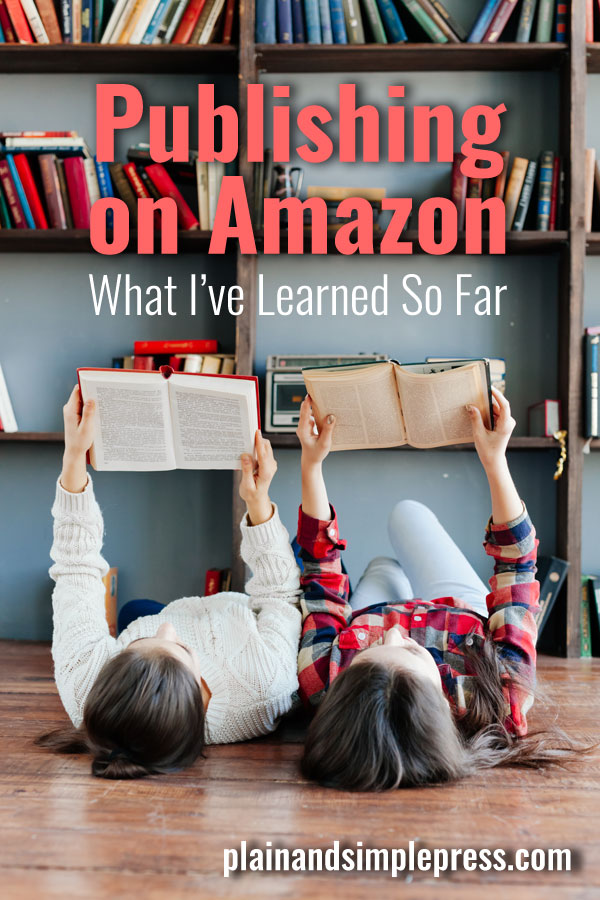 The first two books I put online, Slave Labor and 30 Pounds/4 Months, were frank sandbox projects. While I thought some folks might buy 30 Pounds (diet books are popular, particularly when coupled with recipes), I harbored no illusions about the Slave Labor rant. My main purpose in publishing these two works was to learn how to publish ebooks on Amazon and how to arrange a print-on-demand version.
The first two books I put online, Slave Labor and 30 Pounds/4 Months, were frank sandbox projects. While I thought some folks might buy 30 Pounds (diet books are popular, particularly when coupled with recipes), I harbored no illusions about the Slave Labor rant. My main purpose in publishing these two works was to learn how to publish ebooks on Amazon and how to arrange a print-on-demand version.
Those really were learning experiences. But the 18 short Fire-Rider serializations you can see on our “Books” page also served the same purpose, if not so deliberately.
People will buy some obscure titles!
Fire-Rider was online for only nine days, and somebody had already bought it. Two readers bought the cookbook, and strangely, Slave Labor continues to sell one or two copies per reporting period. Slave Labor was plugged only at The Adjunct Project, a very obscure website, indeed.
You can publish to Amazon directly from a Word file, without having to convert to ePub or .mobi format, provided…
- you have a well designed Word template and use its styles function consistently; and
- your format is extremely simple, with no tables, graphs, zingers, doodlebugs, or whatnots; and
- you understand that what you see in Word is not what you see in Kindle.
If your book’s layout is any more complex than chapter headings and plain-vanilla text, conversion from .docx format will require some sophisticated coding exeprtise.
In that case you either need to convert to a Kindle format in a program such as Calibre (extremely techie) or hire someone like Ken Johnson, Your eBook Builder.
If you think you’re going to sell print-on-demand books to be fulfilled through Amazon, you’ll need to buy bar codes matched up to your ISBN through Bowker.*
Amazon will not handle your print-on-demand masterpiece without a barcode.
* UPDATE: You can generate a free bar code for your ISBN here: http://www.creativindiecovers.com/free-online-isbn-barcode-generator/
You need an ISBN to get your book listed in Books in Print.
An ISBN, which you buy through Bowker*, is used identify each book that is published, and each edition of the same book. ISBN also identifies the publisher of the book. It is the standard ID number used to identify books by booksellers, libraries, book wholesalers and distributors.
*See the update, right above. ↑
Amazon can be very difficult to deal with.
For every book, you will spend a half-hour to 45 minutes filling out forms.
Instructions are obscure.
Anything out of the ordinary (such as the use of a pseudonym or a book that doesn’t fit into a specific hole) confounds the system.
Amazon’s handiest Kindle previewer is worthless. Download their more sophisticated viewer to proofread your e-book.
After you have uploaded your file to Amazon’s publishing software, you will be given the opportunity to proofread the result in an online Kindle viewer in the Cloud. Don’t use this: what you see is not what your reader will get.
Instead, download a resident Kindle viewer — Amazon also offers this option at the same point in the process. Download and install the Kindle viewer, and use that to proof your document. Bear in mind that even this viewer doesn’t necessarily show what all readers will see on all devices, which can include cell phones, tablets, Kindle devices, laptops, and desktops.
If you’re going to publish books on Kindle and Nook as part of your business model, you had better be amply capitalized, since you’ll be hiring lots of help.
Among others, I now contract to two writers, a web guru, a graphic designer, my assistant editor, a social media consultant, and that eBook builder.
If you have a well-designed Word template and you apply its styles consistently, preparing a print-on-demand layout is MUCH easier than preparing a book for publication on Kindle.
Several outfits sell Word templates for print-on-demand production. CreateSpace, of course, will build your PoD book for you. However, this is done overseas on a mass-production basis and you have rather little control over the results.
But since no one expects a print-on-demand book to display the perfection of a professional page designer, you can get away with using a template if your layout is fairly simple — that is, if it doesn’t contain a lot of photographs, tables, and graphs.
I’ve found that Joel Friedlander’s book design templates work exceptionally well, both for simple e-book layout and for plain-vanilla print-on-demand books. Such templates come with standardized Word “styles” set up to coordinate heads, subheads, and body copy, and with correct margins and gutters. Several of Friedlander’s templates switch-hit: they can be used for e-book design as well as for PoD.
By and large, because what you see on your Word, Scrivener, or Pages screen IS what you’ll get in the print version, a template makes PoD much easier to accomplish than e-book design can be. Any image will present difficulties in designing an e-book, and trying to get fancy with heads, subheads, fonts, lists, pull-outs and the like can make quite a mess of an e-book. If your book is even slightly more complex than plain gray space with a few chapter headings and one level of subhead, you really should hire an e-book designer to get it right.


 The first two books I put online,
The first two books I put online, 
